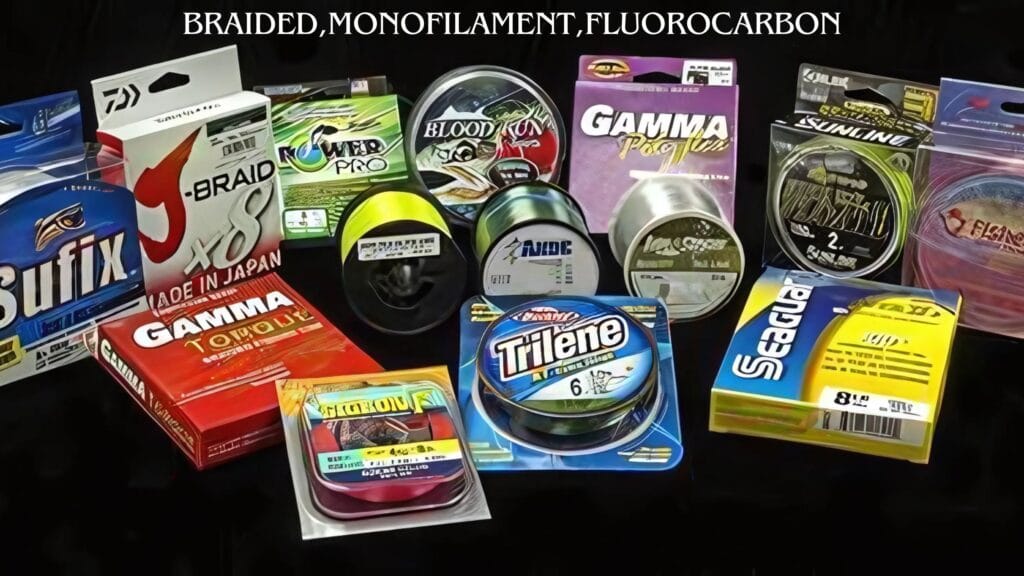
Mastering Saltwater Fishing: A Complete Guide to Choosing the Right Fishing Line
On March 14, 2025 by Andy Ford
One essential aspect of success in Saltwater fishing is choosing the right fishing line.
With so many options available, understanding how to choose the right fishing line for saltwater can be the difference between a bountiful catch and a frustrating day on the water.
In this comprehensive guide, we’ll explore the different types of fishing lines suitable for saltwater use, key factors to consider when making your selection, recommended lines for various saltwater species, and expert tips on maintaining your fishing gear.
With the right knowledge, you’ll be well-equipped to tackle the waves and reel in your next trophy catch!
Key Takeaways
- Understand the different types of fishing lines available for saltwater fishing, such as monofilament, fluorocarbon, and braided lines.
- Consider key factors like line strength, diameter, and stretch when choosing the right fishing line for saltwater conditions.
- Choose the appropriate fishing line based on the target saltwater species to enhance your chances of success.
- Regularly maintain and handle your fishing line properly to ensure longevity and optimal performance.
- Utilize the right knots and techniques specific to saltwater fishing to prevent line breakage during use.
Understanding the Types of Fishing Lines for Saltwater
When it comes to enjoying a successful day on the water, understanding the types of fishing lines for saltwater is crucial.
Saltwater fishing presents unique challenges, as the harsh conditions can easily wear down inferior lines.
Generally, there are three main types of fishing lines used in saltwater environments: monofilament, fluorocarbon, and braided lines.
Monofilament lines are known for their stretch and buoyancy, making them ideal for various techniques, such as live bait fishing.
Fluorocarbon, on the other hand, is nearly invisible underwater and has a lower stretch compared to monofilament, making it an excellent choice for anglers seeking a stealthy approach.
Lastly, braided lines offer exceptional tensile strength and sensitivity, making them perfect for heavy-duty saltwater applications.
Knowing how to choose the right fishing line for saltwater involves considering factors like the type of fish targeted, fishing techniques employed, and environmental conditions.
With the right line, anglers can enhance their experience and increase their chances of landing that prize catch.
Factors to Consider When Choosing a Fishing Line
When it comes to fishing, choosing the right gear can significantly influence your success, and understanding how to choose the right fishing line for saltwater is crucial.
Saltwater fishing presents unique challenges, such as corrosion from salt exposure and the need for higher durability under tough conditions.
One of the primary factors to consider is line material; braided lines offer strength and sensitivity, while monofilament provides buoyancy and stretch that can be beneficial for certain techniques.
Additionally, the line’s test strength is vital; ensure it matches the species you are targeting and the tackle you are using.
Consider the diameter of the line as well, as a thinner line can minimize visibility to fish but may compromise strength.
Lastly, think about the color of the line; clear or blue lines often work best in saltwater environments to blend in with the water and avoid spooking the fish.
By taking these factors into account, you can confidently choose the right fishing line for your saltwater fishing adventures.
‘The fishing line is the lifeline between you and the fish; choose it wisely and it will serve you well.’
Recommended Fishing Lines for Different Saltwater Species
When it comes to learning how to choose the right fishing line for saltwater fishing, it is essential to consider the specific species you are targeting, as well as the fishing conditions you will encounter.
For light inshore species like spotted sea trout or redfish, a monofilament line in the range of 10-15 lb test is often recommended, as it provides excellent sensitivity and ease of handling.
However, for bigger game fish such as tarpon or marlin, anglers typically turn to braided line due to its high strength-to-diameter ratio, allowing for the use of thinner lines that can handle heavy loads while reducing water resistance.
For those targeting bottom dwellers like snapper or grouper, consider using a fluorocarbon leader, which is nearly invisible underwater and has excellent abrasion resistance.
Ultimately, the best fishing line for your saltwater expedition will depend on your targeted species, the fishing environment, and your personal preferences, making it crucial to research each line type to maximize your fishing success.
Tips for Maintaining and Handling Your Fishing Line
Choosing the right fishing line for saltwater environments is crucial for any angler looking to maximize their success on the water.
Saltwater can be harsher than freshwater, which means you need to consider several factors when selecting your line.
First, consider the material; braided lines are often recommended for saltwater due to their excellent strength-to-diameter ratio and resistance to abrasion from salt and other elements.
Monofilament lines are also popular, especially for those who prefer stretch and ease of handling, while fluorocarbon lines offer great invisibility underwater, perfect for wary fish.
Additionally, pay attention to the line’s strength and the recommended test weight; it’s important to match your line to the type of fish you’re targeting.
Don’t forget to check for UV resistance, as prolonged exposure to sunlight can degrade certain lines.
By carefully considering these factors, you’ll be well on your way to choosing the right fishing line for saltwater, ensuring that your fishing experience is both enjoyable and successful.
